Top Benefits of Containerization For Your Startup
A container is an isolated unit of software running on top of an operating system. Containers are getting popular among startups because containerized applications are portable, have built-in scalability fault tolerance, and promote faster development cycles. That’s why startups prefer containers for new application development to gain a business advantage over competitors who are still using VMs for application deployment and packaging.
In this article, we will discuss the major benefits of containerization for growing startups and how organizations can take advantage of these benefits to make their applications a success. Let’s go through the critical points below!

Morgan Perry
May 24, 2022 · 5 min read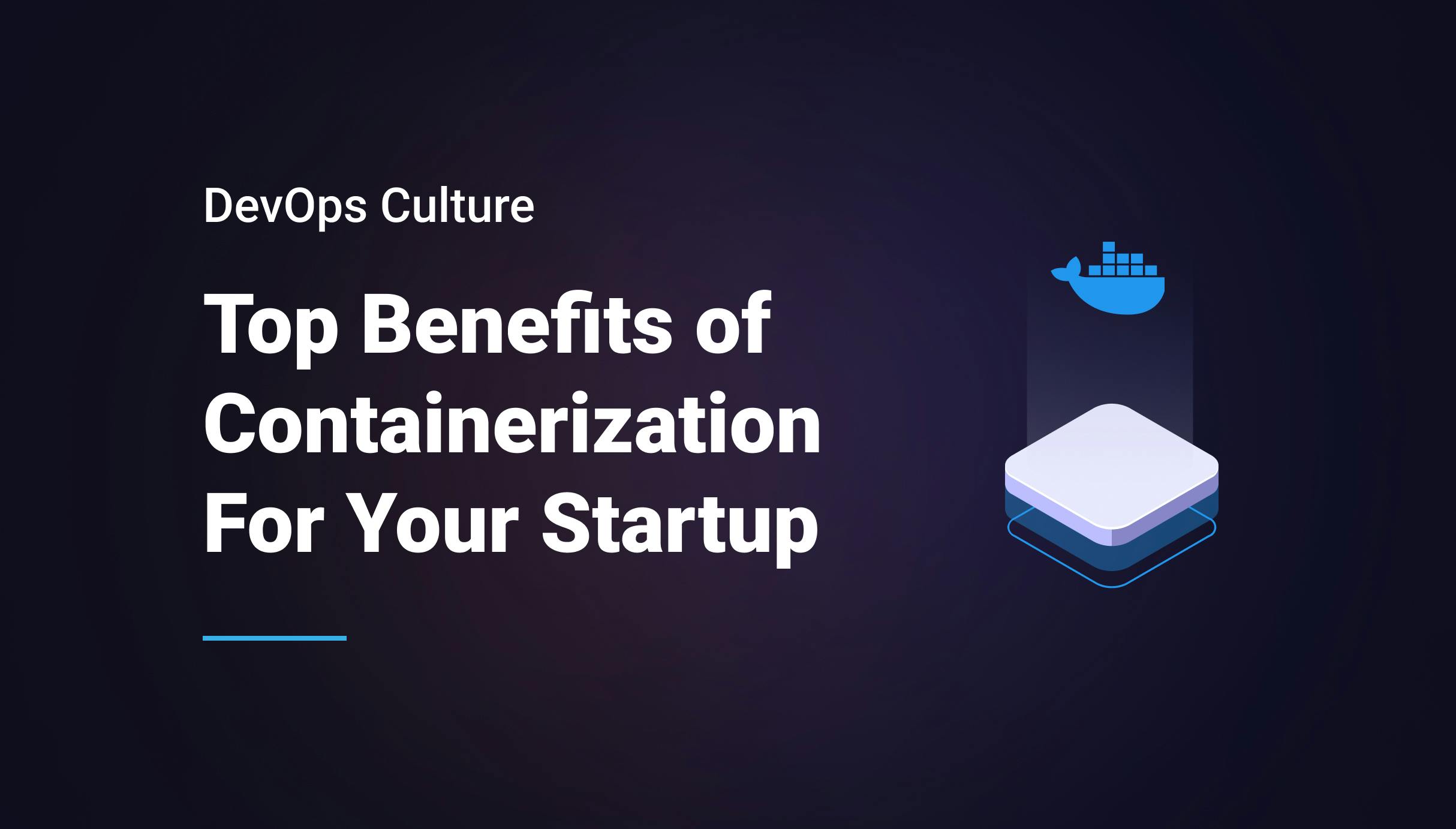
#Portability
Portability is one of the most significant advantages of containers. The claim is “Build once, run everywhere.” So if you create a container image of your application on a Linux machine, then it can be deployed to Windows, Mac, or any other operating system having the container agent installed. Previously, with the non-containerized application, it took too much time to achieve that, mainly due to differences in run time libraries and dependencies.
The container image is portable because everything needed to run that application is packaged inside that container. That means all the application binaries, dependencies, 3rd party integrations, etc., are all packaged in the container image. Note that the configuration, secrets, and data storage are not part of the container image, and it should be part of the environment instead of the application build.
Containers can run on virtual machines, on bare metal servers, etc. Even a container image from a developer’s laptop can run on a cloud environment and on an on-premise environment. This portability gives immense flexibility and business advantage to the applications deployed via container versus applications deployed through VMs only. See the below image for illustration.

#Fault tolerance & Efficiency
Each container operates in its own world and is totally isolated from other containers on the same VM. That means if one of the containers goes down, it does not affect the other containers. Not only that, developers can debug and fix the ailing container without having any downtime with other containers on the same host.
Because isolated containers can perform their operations without interfering with other containers, that allows the underlying host to perform many functions simultaneously.
Unlike a VM containing the whole operating system and the application, containers are very lightweight. They share the host operating system kernel only and get access to the underlying hardware through the host operating system. Containers do not need virtualized OS, hypervisors, etc. As a result, containers eliminate any bottlenecks associated with virtualization techniques.
That makes containers lightweight, faster, and more portable as compared to traditional VM.
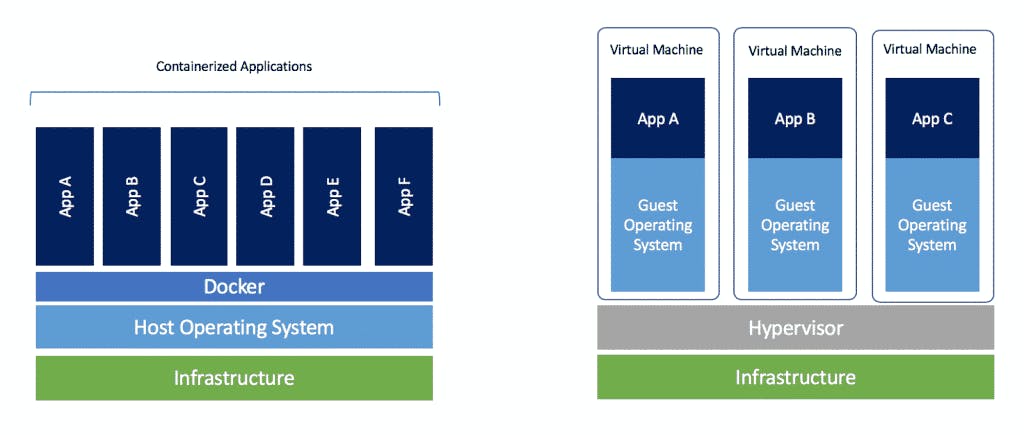
In the above image, you can see six containers running on the same VM, and each container is packaged with its own set of applications and binaries. Still, no operating system is part of the container itself. That results in reduced infrastructure cost, better fault tolerance, and improved utilization of resources.
#Agility & Faster Deployment
Containers are inevitable for modern DevOps workflow because the traditional VM-based applications cannot keep pace with the fast deployments and CI/CD challenges. Containers improve agility because it is super easy to create a new container and remove it with the same ease. And with the container orchestrating tools like Kubernetes, it really gets simple to automate the process of managing, scaling, and removing containers on the go.
The ability to orchestrate containers quickly allows you to compartmentalize your application into smaller microservices and package/deploy these microservices through containers. That makes it easier for developers to make changes to a particular compartmentalized area of the code and deploy only that particular container easily. As mentioned above, one container is totally isolated from other containers, so it is less risky to make changes to a specific container in the application.
In the traditional VM-based approach, it was impossible to make significant changes to the application and deploy it on production without worrying about the possible delays and complexities. The combination of containers and microservices has paved the way for the modern CI/CD process, where you deploy to production hundreds of times in a single day without any downtime.
The agility and faster deployments allow businesses to rapidly roll out new business features and bug fixes to improve customer experience. Not only that, but containers also allow you to change your business direction quickly without worrying about the need to redesign the application from scratch. The overall results are improved development pipelines, faster production deployments, platform independence, etc.
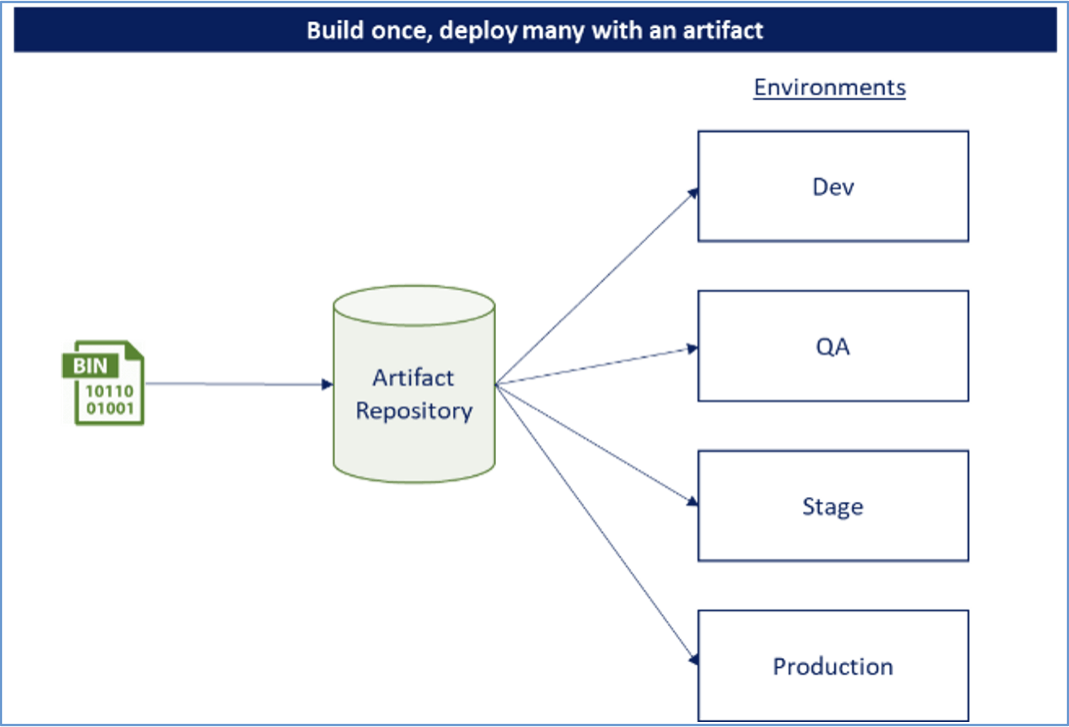
Containers are the best solution for ephemeral or temporary environments. You can spin a UAT (User Acceptance Tests) environment and deploy your containerized application in a quick time. After the testing is complete, you can remove your containers easily.
Take a look at the article What is Environment as a Service (EaaS) and How is it Impacting Productivity?
#Scalability
Every growing application is incomplete without having the capability to scale out. Imagine a Black Friday sale for an eCommerce website, for example. Indeed the application will receive much more traffic. And after Black Friday, the workload will be back to normal. The application should be able to support this temporary surge in the load. With containers, it works like a charm. You can add multiple identical containers having the same application packaged inside to handle the load. And because containers are lightweight, it does not take a lot of resources to spin up new containers.
It gets more interesting when you pitch in the container orchestration tool like Kubernetes. Kubernetes can perform intelligent scaling based on the needs. It will automatically add or remove containers based on the workload on the fly. It will keep an eye on the overall resources available to the container cluster to ensure the containers do not overrun the available capacity. AWS EKS is an excellent service that does most of your work.
The innate capability of the containers to scale-out help businesses grows without worrying about the effort and complexity associated with manual provisioning and scaling of containers. See the below image showing the benefits of container orchestration.
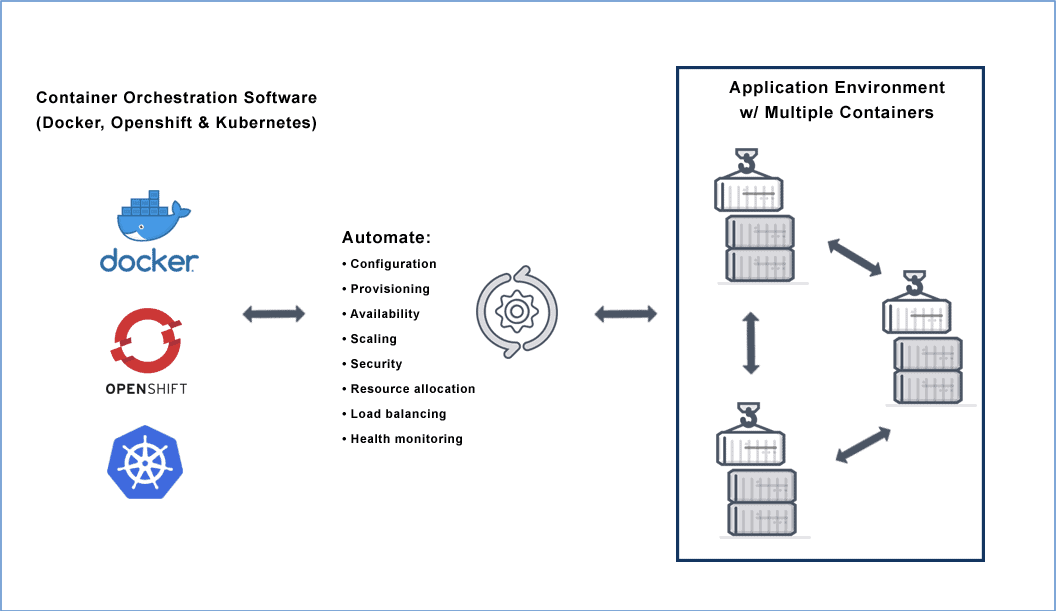
#Conclusion
Application containerization is a popular trend with modern applications. Apart from the legacy apps, almost every new application being developed using containers. In this article, we went through some major benefits which containers offer. We mentioned portability, fault tolerance, faster development, scalability, and security. Apparently, it is simple to take advantage of the features mentioned above. However, it is not as simple to execute. Startups usually do not have skilled DevOps, and they struggle to set up and utilize containers on AWS. With Qovery, that worry is over. You can set up your containerized application on AWS in minutes. Using industry-standard tools like Docker and Kubernetes (AWS EKS), Qovery will help you set up, manage and scale your containerized app on AWS with simplicity while reaping the same benefits discussed above. Start Deploying containerized applications on AWS with Qovery!
Your Favorite DevOps Automation Platform
Qovery is a DevOps Automation Platform Helping 200+ Organizations To Ship Faster and Eliminate DevOps Hiring Needs
Try it out now!

Your Favorite DevOps Automation Platform
Qovery is a DevOps Automation Platform Helping 200+ Organizations To Ship Faster and Eliminate DevOps Hiring Needs
Try it out now!
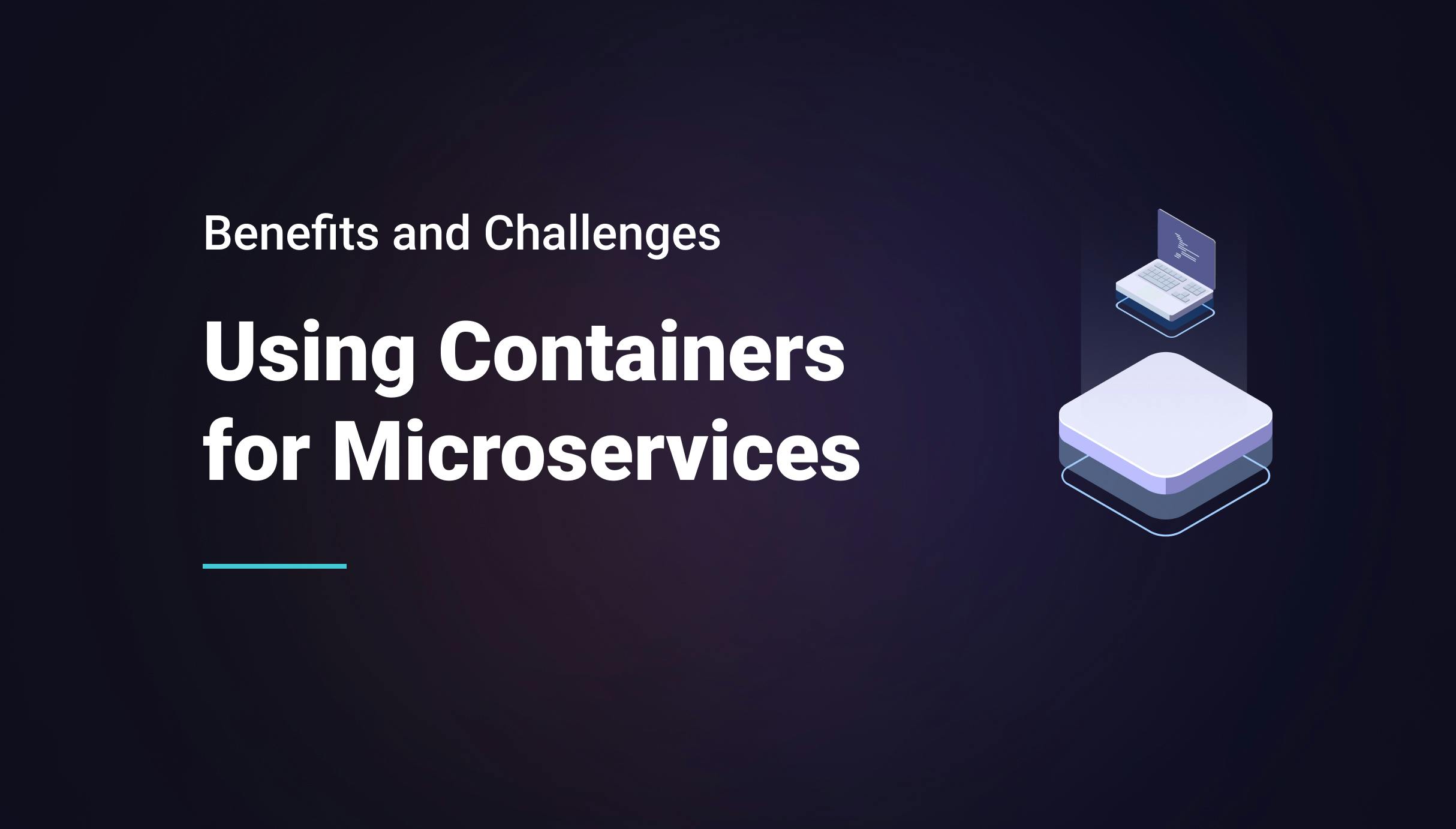
.jpg?ixlib=gatsbyFP&auto=compress%2Cformat&fit=max)
.jpg?ixlib=gatsbyFP&auto=compress%2Cformat&fit=max)